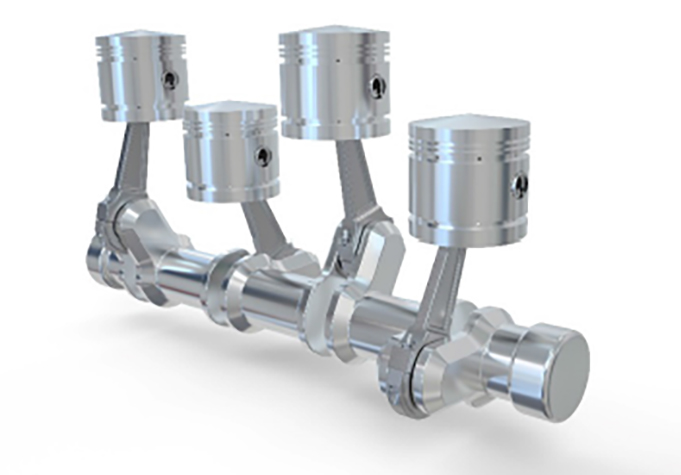
How will pump vibration differ when driven by an engine compared to an electric motor?
Engines do not have the same characteristics as that of a motor drive. An electric motor produces a smooth torque to drive the load and does so without any reciprocating parts or significantly unbalanced rotating components. Typically, the motor rotor is balanced to a tight tolerance to minimize vibration caused by unbalance forces occurring at the rotating frequency.

There may be some slight torque ripple at line frequency (i.e., 50 hertz [Hz] or 60 Hz) or higher harmonics of line frequency, but these are typically in a range of 1 to 2 percent of mean torque, if they exist at all.
An engine generates torque in a fundamentally different manner than an electric motor. Fuel is burned in a cylinder, and the expanding gas generates torque on a crankshaft through a slider crank mechanism containing a piston and connecting rod, as seen in Image 1.
This firing process inherently generates greater vibration levels as compared to electric motor drives because engine generated torque is not smooth.
The torque profile depicted in Image 2 is how a single cylinder of an engine produces power and is normal. The resulting load on the pump will include both lateral forces at the bearings as well as torque transmitted through the engine coupling. This load versus time is not a smooth sine wave, which can lead to generation of strong harmonics of the firing frequency.

Furthermore, the cylinder to cylinder combustion process is typically not uniform and in a four-cycle engine, there are noticeable, and possibly dominating, harmonics at half-engine running speed, which can be transmitted to the pump.
Generally, the pump is designed for these forces and the measurable vibration at the pump bearings are at normal levels, but the number of harmonics and variable speed increase the chance of resonance occurring. In the case of resonance, a normal forced vibration can be amplified and result in excessive pump vibration.
What is the acceptable pump vibration when driven by an engine? This is a common question. The American National Standards, ANSI/HI 9.6.4-2016 Rotodynamic Pumps for Vibration Measurement and Allowable Values standard excludes pumps driven by stationary reciprocating engines.
The purpose of HI’s Paper Vibration Characteristics of Stationary Engine Driven Rotodynamic Pump Systems describes stationary engine vibration characteristics and informs readers that the HI is working on a data collection project that has an end goal of expanding the scope of ANSI/HI 9.6.4 to include guidance for acceptable vibration limits of rotodynamic pumps driven by stationary reciprocating engines.
For more information on engine driven pump vibration, refer to the free paper “Vibration Characteristics of Stationary Engine Driven Rotodynamic Pump Systems” at pumps.org.

